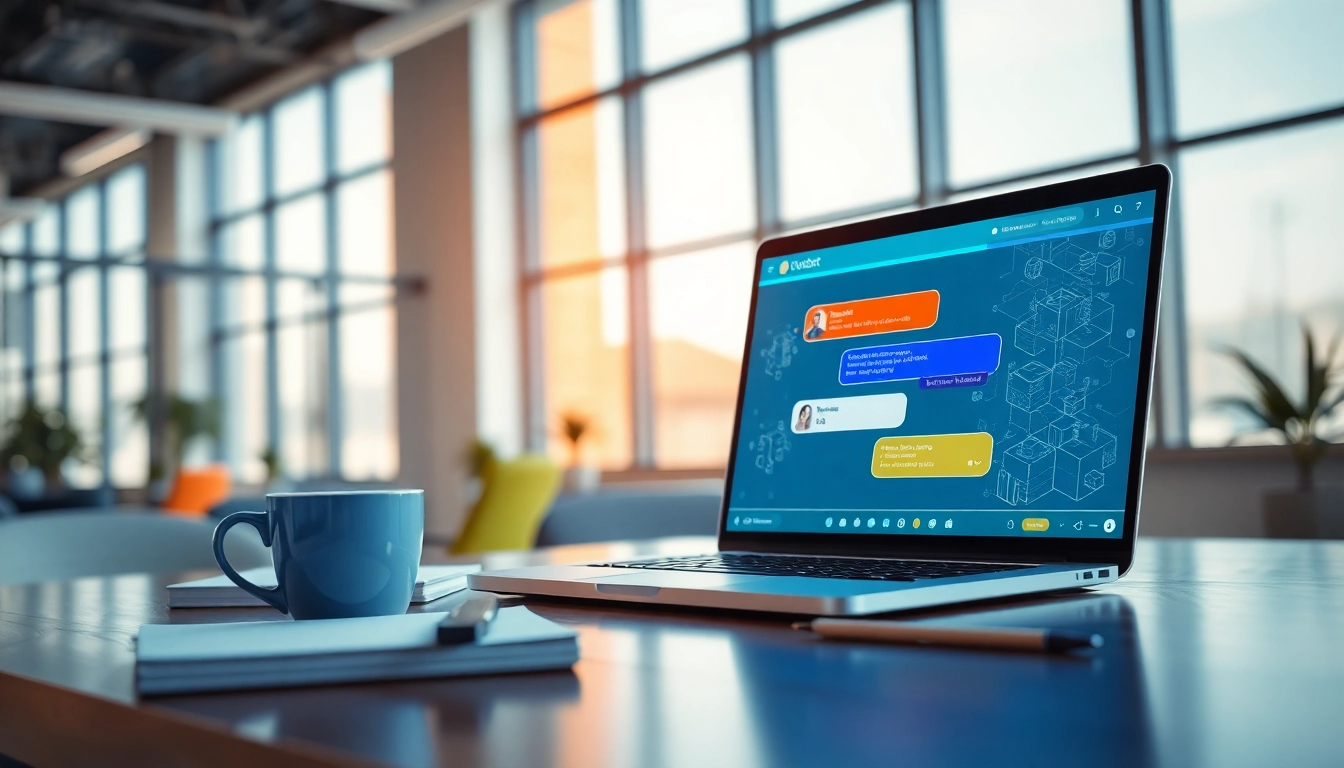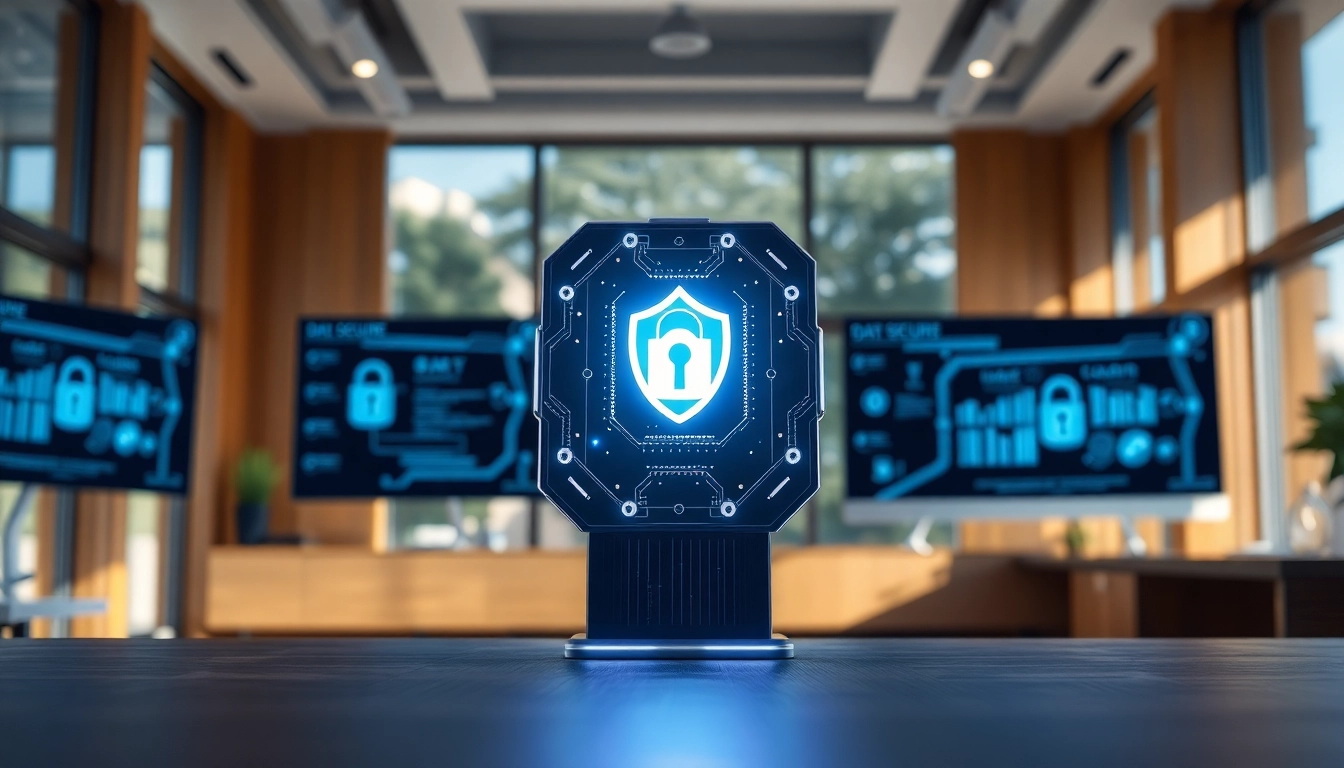Understanding ChatGPT Chatbots
What is a ChatGPT Chatbot?
The concept of chatbots has evolved significantly over the years, with advancements in artificial intelligence making them more sophisticated and able to engage with users in natural language. A chatgpt chatbot is a state-of-the-art conversational agent powered by OpenAI’s Generative Pre-trained Transformer (GPT). These chatbots can understand context, generate human-like responses, and adapt to various conversational flows, catering to an array of applications from customer service to entertainment. They leverage vast amounts of text data to make their conversations as fluid and engaging as possible.
The Technology Behind ChatGPT
At the heart of ChatGPT chatbots is the underlying technology of neural networks, more specifically, transformer architectures. First introduced in the groundbreaking paper “Attention is All You Need” by Vaswani et al. in 2017, transformers utilize a mechanism called self-attention, which allows the model to weigh the significance of different words in a sentence when generating responses. Unlike traditional models that may struggle with context over longer conversations, transformers can handle larger contexts and relationships within text.
ChatGPT builds on foundational advancements in natural language processing (NLP) and leverages massive datasets for training, allowing it to generate responses that are contextually relevant and nuanced. Moreover, OpenAI has incorporated reinforcement learning from human feedback (RLHF), enhancing the model’s ability to provide safe and meaningful interactions.
Benefits of Using ChatGPT for Businesses
Integrating a ChatGPT chatbot into a business environment comes with numerous advantages:
- 24/7 Availability: Unlike human agents, chatbots can operate continuously, providing instant responses to customer inquiries regardless of the time of day.
- Scalability: A single chatbot can handle thousands of conversations simultaneously, making it a cost-effective solution for businesses looking to enhance customer interaction without increasing workforce size.
- Consistency: ChatGPT chatbots deliver consistent responses, reducing the potential for errors or misinformation that can arise from human interactions.
- Enhanced User Experience: By utilizing natural language understanding, these chatbots engage customers in more meaningful conversations, leading to higher satisfaction and retention rates.
- Data Collection and Insights: Chatbots can seamlessly gather user data and feedback, helping businesses understand customer needs and preferences, leading to improved products and services.
Implementing a ChatGPT Chatbot
Choosing the Right Platform
Selecting a platform for deploying a ChatGPT chatbot is a critical first step. Several factors should be considered:
- Integration Capabilities: Ensure that the platform can seamlessly integrate with existing business systems, such as Customer Relationship Management (CRM) software, e-commerce platforms, or helpdesk systems.
- User Interface and Experience: The platform should offer an intuitive interface for both users and administrators to create, customize, and monitor the chatbot’s performance.
- Cost and Scalability: Evaluate the pricing structure and determine if it scales well with your business growth. Many platforms offer tiered services that accommodate different needs.
- Support and Community: Consider the level and quality of customer support and the existence of a user community, which can provide valuable resources and troubleshooting assistance.
Effective Setup and Customization
Once a platform is selected, the effective setup and customization of your ChatGPT chatbot play a pivotal role in determining its success. Start by defining its primary functions: Will it provide customer support, take orders, or answer FAQs? Based on its purpose, tailor its conversational flow, tone, and personality to align with your brand’s voice.
Furthermore, utilizing pre-defined templates can greatly accelerate the setup process. Training your chatbot with frequently asked questions and common inquiries will improve its accuracy and effectiveness. Additionally, continuous testing and modification based on user interactions will enhance the chatbot’s performance over time.
Integration with Existing Systems
To maximize the potential of a ChatGPT chatbot, integrating it with existing business systems is essential. This integration allows seamless data transfer, which can enrich interactions and improve overall customer service. For e-commerce platforms, integrating the chatbot with payment processing systems enables the bot to assist with transactions directly. In CRM systems, chatbots can fetch customer history to provide more personalized assistance and recommendations.
Best Practices for Optimization
Enhancing User Experience
Optimizing the user experience is crucial for the success of a ChatGPT chatbot. To achieve this, consider the following practices:
- Personalization: Address users by their names and use previous interactions to make conversations feel tailored and relevant.
- Clear Call-to-Actions: Guide users through the conversation with clear prompts to avoid confusion and ensure that they achieve their desired outcomes.
- Natural Language and Tone: Maintain a friendly and approachable tone, making the interaction feel less mechanical and more human-like.
Monitoring Chatbot Performance
Regularly monitoring chatbot performance is essential for continuous improvement. Utilize analytical tools to track metrics like user engagement rates, satisfaction levels, and completion rates for various tasks. Analyzing these performance indicators will help identify areas needing enhancement, allowing for timely adjustments to improve functionality.
Iterating Based on User Feedback
User feedback serves as a critical resource for refining your ChatGPT chatbot. Encourage users to share their experiences and suggestions. This can take place through post-interaction surveys, direct prompts within the chat, or follow-up emails. By actively incorporating feedback into updates, you enhance the chatbot’s effectiveness and relevance to users’ needs.
Measuring Success
Key Performance Indicators for Chatbots
Defining success metrics is crucial for evaluating the effectiveness of your ChatGPT chatbot. Some key performance indicators (KPIs) include:
- Response Time: Measure how quickly the chatbot responds to users, which reflects its efficiency and timeliness.
- Resolution Rate: Track the percentage of inquiries resolved without human intervention to assess the chatbot’s capability.
- User Satisfaction Score: Collect feedback through ratings after interactions to gauge overall user contentment.
- Engagement Metrics: Analyze conversation duration, frequency of interactions, and retention rates to assess user engagement.
Analyzing User Data
The analysis of user data collected through chatbot interactions can provide profound insights. By understanding trends in user inquiries, common pain points, and most frequent services sought, businesses can better align their offerings with user needs. Utilizing machine learning tools can help identify patterns that may not be immediately visible, allowing for proactive improvements.
Creating Actionable Insights
Transforming data analysis into actionable insights involves creating strategies based on the findings. For instance, if data reveals common questions about a particular product, businesses could enhance FAQ pages or add targeted marketing campaigns. Additionally, periodic review sessions focusing on chatbot interactions can help steer strategic directions for content and operational improvements.
Future of ChatGPT Chatbots
Emerging Trends in Chatbot Development
The landscape of chatbot development is constantly evolving, with significant technological advancements leading the way. Some emerging trends include:
- Multi-Modal Interactions: The integration of various communication forms, such as voice and video, is growing, enabling chatbots to offer more diverse and engaging interactions.
- Increased Personalization: As machine learning algorithms continue to improve, chatbots will adapt even more closely to user behaviors and preferences, providing highly personalized experiences.
- Emphasis on Security and Privacy: As chatbots gather and process significant user data, ensuring privacy and adherence to data protection regulations will be increasingly prioritized.
Predictions for Chatbot Evolution
As we look to the future, the sophistication of ChatGPT chatbots will only increase. Future iterations are likely to handle complex queries across multiple domains seamlessly and with a higher level of contextual understanding. Furthermore, businesses may begin to utilize AI-driven chatbots in more strategic ways, integrating them into broader digital transformation initiatives to enhance customer touchpoints across all channels.
Preparing for Future Challenges
While the potential for ChatGPT chatbots is enticing, businesses must also be ready to address challenges that may arise. This includes staying abreast of technological advancements, evolving consumer expectations, and stricter regulations regarding data usage. Being proactive in continual learning and adaptation will be key to leveraging these technologies effectively while overcoming obstacles.



